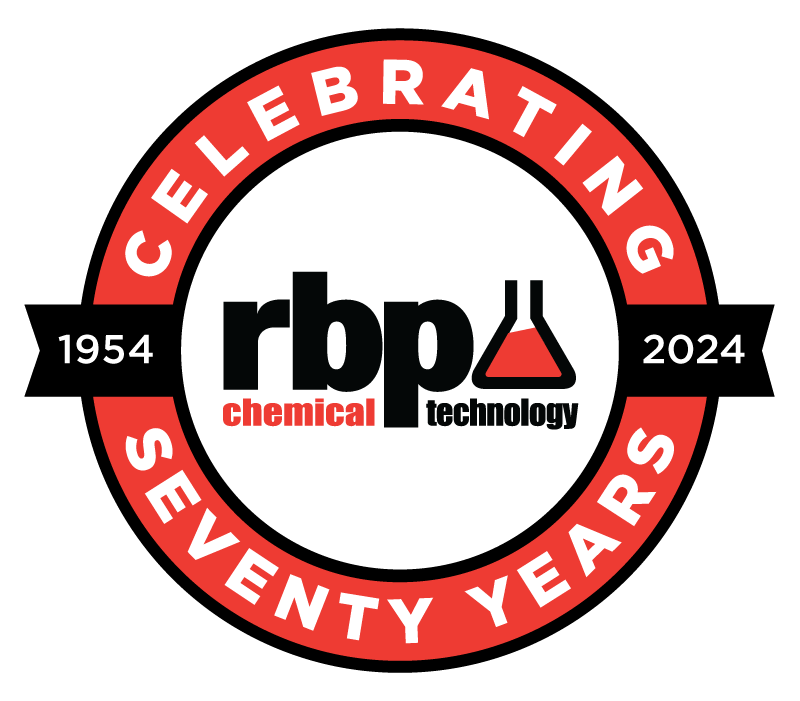Facts about Fountain Concentrates
In lithographic offset printing it is necessary to keep the non-image areas of a plate moistened with water so that they will not accept ink. During platemaking these non-image areas are desensitized, usually with a thin absorbed film of gum Arabic and desensitizer so that they prefer water instead of ink.
If the desensitized film was able to remain on a plate indefinitely, it would be possible to run plates with nothing but water in the dampening system. However, the desensitized film wears off gradually as the plate continues to run on the press. Eventually it is necessary to use chemicals to rebuild the desensitized film and keep the non-image area free of ink.
The fountain concentrate is a mixture of chemicals and water that serves to repel ink from the non-image area of the printing plate. The function of the chemicals is to enhance the performance of the water, which serves to keep the non-image areas water loving and prevents corrosion (desensitizing) of the plate surface.
Fountain concentrates are multi-component solutions. They usually contain a variety of chemical families. They include wetting agents such as surfactants and/or solvents. This family of chemicals acts to lower the surface tension of water and make it spread more efficiently across the plate surface. Fountain concentrates also contain film formers. In many cases the film former is Gum Arabic, but in the last 15–20 years some manufacturers have switched to synthetic polymers. The third major family of chemicals is acids and/or salts of acids. These chemicals act as buffering agents and desensitizers to adjust the pH of the press solution. They also condition the metal surface of the plate and prevent sensitivity and scratches from printing. The combination of these chemicals provides an environment that keeps the plate printing clean, while maintaining good ink and water balance.
Fountain concentrates vary widely to meet an assortment of applications. Different plate materials such as paper, plastic, bi-metal and aluminum require different chemistries. The type of printing, ink, paper, water and dampening system also play a role in the type of fountain solution to be used.
pH
pH is a measure of the degree of acidity or alkalinity in a solution. pH is based on a logarithmic scale that runs from 0 to 14 with 7 being neutral. For each change of 1 pH unit the acidity or alkalinity changes by 10.
For example, a change in pH from 7 to 6 would result in 10 times more acid, 7 to 5 100 times more acid and 7 to 4 1000 times more acid.
Thus, it can be seen that small changes in pH represent dramatic changes in acidity or alkalinity.
It is recommended that the proper operating range for pH in an acidic fountain solution is 4.0 to 5.0. If the pH becomes too acidic, the solution will start dissolving the aluminum oxide non-image area. If the pH is towards the neutral or alkaline side, the desensitizers such as gum Arabic will stop working properly.
With the advent of conductivity as a control device for concentration of the fountain solution, pH is not being monitored as often as it should be. We recommend that both pH and conductivity be monitored to maintain print quality.
| Paper strips | Easy to use and inexpensive. Not very accurate (± 1 pH unit) depending on the supplier. |
|---|---|
| pH pens | Easy to use, must be calibrated. Fairly accurate (± 0.5 pH unit). |
| Electronic pH meter | Most expensive, very accurate (± 0.1 pH unit) must keep calibrated. |
Conductivity
Conductivity is a measure of the ability of a substance or solution to conduct an electrical charge. In water or any solution the degree of conductivity is determined by the amount of minerals and other ions present. Conductivity is measured on a linear scale, which is represented by the inverse of resistance. The units of measure are micromhos. When considering fountain solutions, most conductivities fall in the 1000 to 3000 micromhos range. There are several variables that influence conductivity. Organic solvents such as isopropyl alcohol will reduce the actual conductivity reading. A 25 to 30 percent isopropyl alcohol solution can cut the conductivity in half.
Temperature also influences conductivity. As the temperature goes up, the conductivity goes up, as temperature decreases, so does the conductivity. A good rule of thumb, is for every 10° F change in temperature, conductivity will change by 100 micromhos.
| Conductivity Pen | Easy to use and relatively inexpensive. Not very accurate ± 100 micromhos. |
|---|---|
| Hand Held Analog and Digital | Easy to use, reliable and durable. Next step up from conductivity pen. Accuracy is good, less than 50 micromhos. Most commonly used meter in the industry. |
| Lab Top (Digital) | Most expensive and most accurate. Less than 10 micromhos when standardized. |
